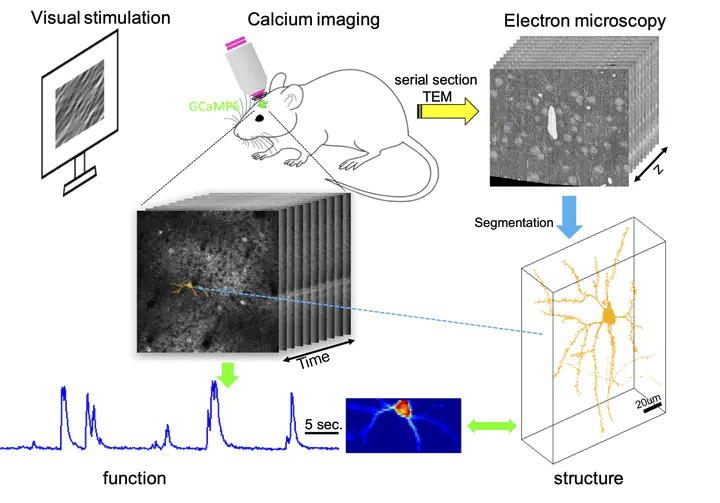
Abstract
A pipeline for fusing CI and densely-reconstructed EM data is developed and an efficient iterative procedure for solving the resulting combined matching and matrix factorization problem is developed. Combining two-photon calcium imaging (2PCI) and electron microscopy (EM) provides arguably the most powerful current approach for connecting function to structure in neural circuits. Recent years have seen dramatic advances in obtaining and processing CI and EM data separately. In addition, several joint CI-EM datasets (with CI performed in vivo, followed by EM reconstruction of the same volume) have been collected. However, no automated analysis tools yet exist that can match each signal extracted from the CI data to a cell segment extracted from EM; previous efforts have been largely manual and focused on analyzing calcium activity in cell bodies, neglecting potentially rich functional information from axons and dendrites. There are two major roadblocks to solving this matching problem: first, dense EM reconstruction extracts orders of magnitude more segments than are visible in the corresponding CI field of view, and second, due to optical constraints and non-uniform brightness of the calcium indicator in each cell, direct matching of EM and CI spatial components is nontrivial. In this work we develop a pipeline for fusing CI and densely-reconstructed EM data. We model the observed CI data using a constrained nonnegative matrix factorization (CNMF) framework, in which segments extracted from the EM reconstruction serve to initialize and constrain the spatial components of the matrix factorization. We develop an efficient iterative procedure for solving the resulting combined matching and matrix factorization problem and apply this procedure to joint CI-EM data from mouse visual cortex. The method recovers hundreds of dendritic components from the CI data, visible across multiple functional scans at different depths, matched with densely-reconstructed three-dimensional neural segments recovered from the EM volume. We publicly release the output of this analysis as a new gold standard dataset that can be used to score algorithms for demixing signals from 2PCI data. Finally, we show that this database can be exploited to (1) learn a mapping from 3d EM segmentations to predict the corresponding 2d spatial components estimated from CI data, and (2) train a neural network to denoise these estimated spatial components. This neural network denoiser is a stand-alone module that can be dropped in to enhance any existing 2PCI analysis pipeline.